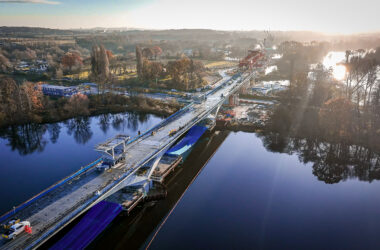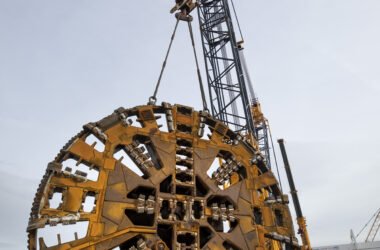Sensors for drones are increasingly being used for surveying, mapping, and inspections in several industries such as mining, construction, agriculture, environmental management, and waste management.

Combining sensors in drones is important because they play an essential role. They collect information and perform operations, making drones useful. As the sensors develop and allow a broader range of applications, drone multifunctionality improves and increases.
Further, you will read in detail about some of the sensors and the perks of merging them with drones.
5 Perks of Merging Sensors & Drones
- Measuring Landscapes & Infrastructure
Photogrammetric technology is used to measure landscapes and infrastructure to provide a detailed insight into on-the-ground environmental conditions by documenting erosion, vegetation density, water clarity, and more.
Today’s photogrammetric technology uses advanced GIS software that helps in generating surveyor-grade measurements of different landscapes and infrastructure. It uses ultra-high-resolution aerial photographs which combine UAV-mounted overhead sensors with robust GIS mapping systems, creating measurable documents.
Through drone photogrammetry, the way you document, study and respond to conditions in natural and artificial environments has changed.
- Detailed High-resolution Maps
LiDAR, which stands for Light Detection and Ranging, collects detailed measurements for maps and surveys. It is a remote sensing technology that is especially useful for micro-topography as it can penetrate through vegetation and forest cover. This technology is used to create high-resolution models of ground elevation.
The application of LiDAR technology includes fields like agriculture, forest planning, building and urban management, construction, mining, and environmental assessments.
- Industrial Inspection
For industrial inspection, drone pilots use thermal imaging to see through darkness or challenging lighting conditions. It also helps them measure the surface temperature of objects at a scene. Thermal imaging can also detect thermal abnormalities that indicate faults or needed repairs.
Thermal drone surveys are done with the help of thermal imaging on commercial roofs to indicate water intrusion magnitude and location.
- Detection of Gas Leakage in Industries
The optical gas imaging (OGI) technology is used in UAVs to detect gas leakages, such as methane, propane, butane, sulfur hexafluoride and hundreds of other industrial gases. Instrument performance, environmental use conditions, and human factors affect leak detection capabilities.
Due to its ability to detect gas leakage, OGI can also be considered a highly specialised version of an infrared or thermal imaging camera.
- Remote Sensing
Analysts in Landsat satellites use multispectral imaging sensors to study land usage and cover the trends of vegetation and agricultural production, environmental and water quality, soils, geology, and other earth resource and science problems. Multispectral imaging captures light from a narrow wavelength across the electromagnetic spectrum.
Multispectral images are captured with special cameras that help in separating the wavelengths using filters or with instruments that are sensitive to particular wavelengths. This technology was developed by NASA for space-based imaging but can now also be used for remote sensing and other applications.
Emerging Sensor Technologies & the Future
As UAV-based technologies improve, more and more industries recognise the importance of the merger of drones and sensors. They can be valuable tools that you can use for various evolving applications.
As drone manufacturers continue to improve and develop new technologies for drones, commercial users will continue to see its usage in various industries.
Written by James Rennie
Prior to starting Australian UAV (AUAV) James Rennie had a long career in natural resource management. In 2012 he identified a convergence of a previous hobby, radio-controlled planes, and his passion for mapping data. Recognising this opportunity he established AUAV in early 2013, one of the first drone companies in Australia. With thousands of commercial flights completed, including in Antarctica, Armenia and throughout Australia, he manages the strategy and growth of the company.








